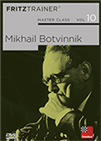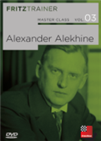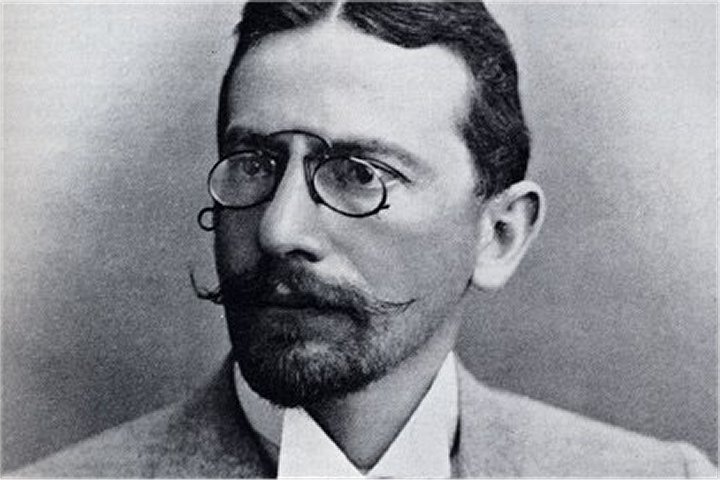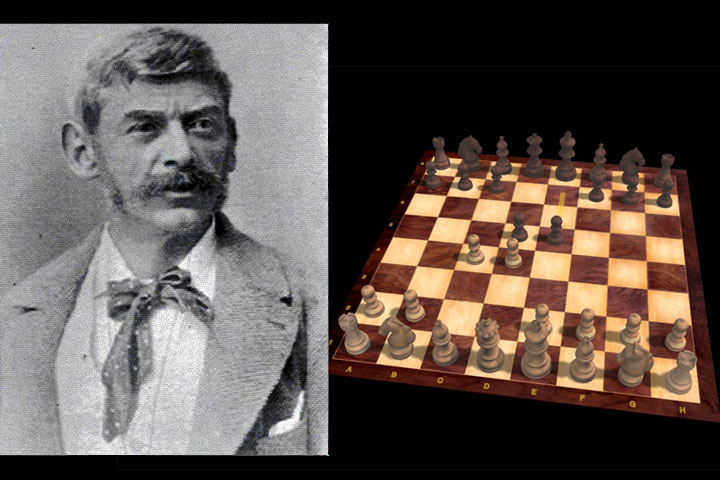Adolf Albin (September 14, 1848 - February 1st, 1920)
The Oxford Companion to Chess by David Hooper and Ken Whyld has the following to say about Albin:
"Albin, Adolf (1848-1920), Romanian-born player, who spent most of his life in Vienna, where he died. Not a great player, perhaps because he learned the game at 22 and did not enter the international arena until he was 43, after his business career faltered. ..."
Albin was born in Bucharest and about his family Albin's biographer, chess historian Olimpiu G. Urcan, writes:
"Albin was born to a very wealthy family, yet his life was not one of opulence, but one of struggle in every dimension. His family was politically persecuted and had to flee from Frankfurt to Zhitomir and then to Bucharest; leaving its properties behind." (Olimpiu G. Urcan, "Adolf Albin and the Genesis of the Albin Countergambit" (PDF))
 Our experts show, using the games of Botvinnik, how to employ specific openings successfully, which model strategies are present in specific structures, how to find tactical solutions and rules for how to bring endings to a successful conclusion
Our experts show, using the games of Botvinnik, how to employ specific openings successfully, which model strategies are present in specific structures, how to find tactical solutions and rules for how to bring endings to a successful conclusionAlbin indeed started his chess career rather late. Mikhail Botvinnik, who learnt to play chess when he was twelve years old, once complained "that this is the reason why throughout my career I have been thinking not as fast as my opponents who knew and exploited that," (quoted in Werner Harenberg, Schachweltmeister, Hamburg: Der Spiegel 1982, p.145), but Albin did not seem to suffer from a lack of tactical flair. He had an entertaining style and did not mind playing gambits.
In fact, a double-edged gambit is named after him: the Albin Counter-gambit which arises after 1.d4 d5 2.c4 e5!?. In the first part of his article, Urcan extensively discusses whether Albin indeed was the first who tried this gambit, but at any rate, it was Albin who made this line famous — even though with a loss. Albin tried "his" gambit at the Impromptu Tournament in New York 1893 in a game against the young Emanuel Lasker who one year later became World Champion.
Lasker was irresistible in this tournament, which he won with 13/13, and he did not seem to lose his composure when faced with Albin's bold opening experiment.
Though he lost against Lasker, New York 1893 was still a success for Albin: he finished second, 4½ points behind Lasker.
Final standings
But the Queen's Gambit was not the only opening in which Albin tried pawn sacrifices. In 1890, at the Kolisch Memorial in Vienna, he played against Adolf Csank, and after the moves 1.e4 e6 2.d4 d5 3.Nc3 Nf6 4.Bg5 Be7 5.e5 Nfd7 he tried 6.h4!?, offering a pawn. However, in the game, Albin was very close to losing and only saved himself with a stalemate trick in a lost position.
 This DVD gives you the key to start out with the French Defence. GM Yannick Pelletier is a specialist of this opening, and believes that the most efficient way to understand its ideas, plans, and typical structures is to study classical lines.
This DVD gives you the key to start out with the French Defence. GM Yannick Pelletier is a specialist of this opening, and believes that the most efficient way to understand its ideas, plans, and typical structures is to study classical lines.
Vienna of the 1890s | Photo: Detroit Publishing Co., under license from Photoglob Zürich, Public domain via Wikimedia Commons
But it was another player who made the pawn-sacrifice 6.h4!? popular: Alexander Alekhine. He used the move 6.h4 to win a fine game against the Swiss player Hans Fahrni at the tournament in Mannheim 1914. In his comments, Alekhine gave the move 6.h4 an exclamation mark and wrote: "This energetic move has been especially played in off-hand games by the ingenious Paris amateur Eugène Chatard, and previously by the Viennese master, A. Albin. It was during the present game that it was introduced for the first time in a Master Tournament." However, when the line was given a name Albin was forgotten, and today the variation arising after 6.h4 is known as Alekhine Attack or Chatard-Alekhine Attack.
For readers curious to learn more, Edward Winter further details the history behind this move, drawing from several items in Chess Notes.
 On this DVD GMs Rogozenco, Marin, Müller, and IM Reeh present outstanding games, stunning combinations and exemplary endgames by Alekhine. And they invite you to improve your knowledge with the help of video lectures, annotated games and interactive tests
On this DVD GMs Rogozenco, Marin, Müller, and IM Reeh present outstanding games, stunning combinations and exemplary endgames by Alekhine. And they invite you to improve your knowledge with the help of video lectures, annotated games and interactive testsAlbin enriched opening theory and in 1872 he published Amiculu Jocului de Schach, the first chess book in Romanian, but he does not seem to have been an opening theoretician. However, he was certainly a dangerous player who could beat anyone. For example, at the Congress of the German Chess Federation 1892, Albin won against Tarrasch who had not lost a single game for quite some time.

Dr. Siegbert Tarrasch
But Tarrasch was not lacking for an explanation for his surprising loss. In his book Dreihundert Schachpartien he writes the following about the tournament in Dresden in general and his loss against Albin in particular:
"I was a bit overworked and felt very tired. Therefore, in the first games every single move seemed to me to be incredibly difficult, and I finished the first week of the tournament in a position that was not particularly favourable. I had only won three of the first nine games, while drawing five, and even losing one, against Albin, my first loss since the tournament in Breslau, which had caused quite a stir that was very flattering for me. I had rather carelessly played a lesser-known variation from the Bilguer but my opponent did not know it and therefore allowed himself at a certain point to play a move that was much stronger than the weak one recommended by the book, and this move brought him an advantage, and thus I lost the game because of my good memory and his lack of knowledge." (Dr. Siegbert Tarrasch, Dreihundert Schachpartien: Ein Lehrbuch des Schachspiels für geübte Spieler, Jens-Erik Rudolph Verlag, Hamburg 2012, p. 244. Reprint of the third edition published 1925. Translation: jf)
However, another reason for Tarrasch's loss was the strong play of his opponent.
Albin died February 1, 1920, in Vienna.
On this DVD IM Trent shows the Albin Counter-Gambit (1.d4 d5 2.c4 e5). Trent found a number of extremely dangerous Theoretical Novelties which will truly put the Albin Counter-Gambit back on the map.
Links

























